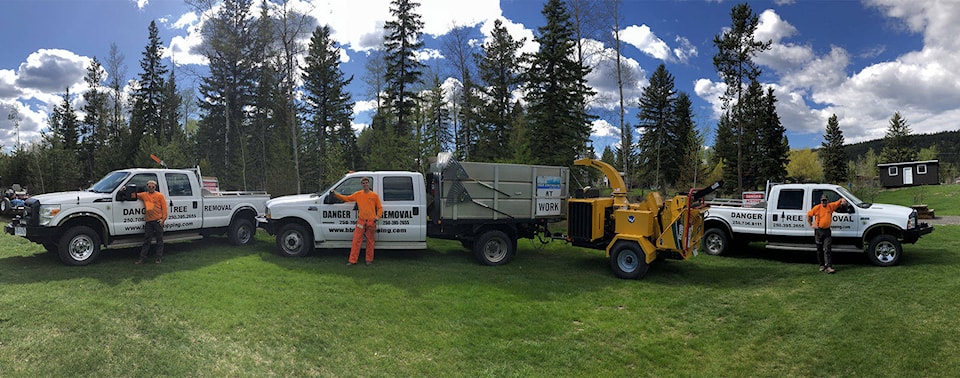With the memory of last year’s disastrous wildfire season still fresh, the warming weather has many Cariboo residents turning their attention to protecting their yards and properties.
And that means looking at the trees and related debris around the home.
Kevin Birch, owner of B&B Tree Topping, has been caring for the Cariboo’s trees for 15 years. In addition to pruning and falling services for fire prevention, and caring for all manner of ornamental and fruit trees, Birch is also certified in high risk and “danger trees” – those that due to their location or health pose a risk to people or property.
“As a danger tree assessor, I can identify a tree that has issues or defects that other people might not recognize,” Birch says.
The case for ‘fire-smarting’
With 50 per cent of wildfire-caused home fires started by sparks and embers, authorities recommend homeowners take steps to reduce the susceptibility of buildings and property to fire.
Highly combustible trees such as coniferous species – those with cones and needles, including spruce, fir, pine and cedar – should not be within 10 metres of your home. In the case of fire, the direct flames and intense heat can cause damage or even ignite your home.
Other combustible plants include those with aromatic leaves or needles, those with accumulations of fine, dry, dead material, resin or oils, and loose, papery or flaky bark. Older deciduous trees with rot and damage are also susceptible to fire and homeowners should enlist a professional to help assess their condition.
After falling or trimming, be sure to clean up debris including dry leaves, twigs and branches, which are all highly flammable, says Birch, who with his two teams also offers clean-up as part of B&B’s pruning and falling services.
While changes within 10 metres of your home will have the biggest impact on its protection, other measures can also be valuable.
Within 30 metres of your home, thinning coniferous trees to at least three metres apart will help reduce the intensity of a wildfire, while pruning tree branches within two metres of the ground and removing smaller coniferous trees will help prevent the fire from climbing into the treetops where it can spread quickly.
And as weekend home visitors start returning for the season, it’s a good idea to take a walk around and see where winter damage or blow-down may have occurred that could present new risks, Birch advises.
***
B&B Tree Falling has been serving the Cariboo, from Cache Creek to Williams Lake, for 15 years. To learn more, visit online, at bbtreetopping.ca, call 250-706-8111, or follow them on Instagram.
